|
Alfred Hitchcock made two versions of The Man Who Knew Too Much. The plots of both movies are basically the same. In each movie a stolid English-speaking couple has their child kidnapped after the husband learns of an assassination plan against a foreign dignitary. Each movie has an iconic climax scene in a massive concert hall. The assassin is supposed to kill a politician (Hungarian in the 1934 version, from an unnamed country in the 1956 version) during a moment in the concert where there is a massive crash in cymbals. The cymbal crash is supposed to mask the gunshot, allowing the assassin time for a clean getaway before people realize that the politician is dead. The 1934 movie starts with British tourist Jill Lawrence (Edna Best) competing in a sharpshooting contest with creepy assassin Ramon Levine (Frank Vosper). Levine makes a pass at Lawrence. She rebuffs him. Levine then allows his pocket watch to chime at the moment Lawrence takes aim at a clay pigeon, causing her to miss. She loses the contest but remains friendly, suggesting to Levine that they may compete again one day in a sharpshooting contest. Jill Lawrence in the 1934 film is a great example of stiff-upper-lip early 20th century feminism. She is a deadly shot with a gun. She matches men in any competition, whether it be shooting or exchanging witticisms. Her marriage with her husband is clearly an equal partnership. She even stops the assassination attempt at the movie’s climax. Lawrence screams at the opportune moment during the concert so Levine (the assassin charged with killing the minister) misses his shot. The moment is a call back (of course) to the first scene where Levine deliberately distracts Lawrence when she tries to take her shot in the sharpshooting contest. The film does not end there. Lawrence’s adolescent daughter Betty has been kidnapped by Levine and his associate Abbott (Peter Lorre, who frankly stole the whole damn film). After the assassination plot fails police officers surround the kidnappers’ hideout. Levine tries to kill Betty but Betty scrambles out through a window. Levine follows Betty onto the roof, his gun drawn. The police officer on the ground takes aim at Levine but he doesn’t dare pull the trigger for fear of accidentally hitting Betty. Lawrence grabs the gun from the trembling officer and she shoots Levine dead. Lawrence and Levine, in a way, did indeed have their sharpshooting rematch. And this time, Lawrence won. She shot Levine before Levine could shoot her daughter. The film then ends with Betty being taken safely off the roof by her father. Hitchcock made several more films in the UK during the run-up to the Second World War. He then fled London and landed in California where his golden age began. By 1956 Hitchcock was extremely successful. He remade The Man Who Knew Too Much with Doris Day in the Jill Lawrence role and Jimmy Stewart as her husband. In the 1956 version the wife’s name is Jo McKenna, a successful Broadway star who gave up her career to happily become a wife and mother. The difference between Jo McKenna in 1956 and Jill Lawrence in 1934 is stark. Jo McKenna lives almost entirely under the thumb of her husband. Unlike her predecessor Jill Lawrence in the 1934 film Jo clearly has no inclination to compete against men. She isn’t shooting guns or bantering with male assassins. The marriage between Jo and her husband Ben McKenna is not an equal partnership. In one (unintentionally) horrifying scene Ben forces his wife to take sedatives when she doesn’t want to. The intent is supposed to show Ben as a caring husband. He wants his wife to be calm when he breaks the news to her that their son has been kidnapped.
Because, you know, women are so goddamn emotional. The scene is meant for a 1950s audience. Look at this man taking care of his weepy wife! It’s a scene, however, that has thankfully aged very badly. You can’t imagine Jill Lawrence the 1934 sharpshooter allowing her husband to treat her in this manner let alone a woman from the 21st century. When the 1934 Man Who Knew Too Much was made women enjoyed a certain amount of freedom. Men had died and countries were devastated first by WWI, then Spanish Flu and finally the Great Depression. Misogyny is an unaffordable luxury when everyone is hungry and the men are dead. Women had to pitch in just to supplement the household income. This was especially driven home during WWII when women simply had to work to keep the country going when the men went off to war. The Nazis were defeated. America was victorious. The men came back from the front, saw a bunch of women working jobs that they wanted, and the backlash was swift. “Give us back our jobs and get back to the kitchen!” And of course men get what they want. You can see the 1956 version of The Man Who Knew Too Much as a retort to the 1934 The Man Who Knew Too Much. Do you know what happens when women are given too much freedom? World War! Flu! Depression! Catastrophe! Dammit, we’re safer when the women stay at home where they goddamn well belong! And if women start mouthing off about it, well, just make sure they take their sedatives. The danger is not with spies or assassinations or kidnappings or guns. The danger is women and making sure women do not know too much.
0 Comments
My Facebook memories brought up my old New Year’s Resolutions from January 2020. Yeah. That’s right. January 2020. That was the last time I made New Year’s Resolutions. Before 2020 I usually made about 20 New Year’s Resolutions at the start of each year and emailed them to myself. Then, when the next year started, I would review the last year’s Resolutions and see which ones I had kept. Now is the time of year where the parking lots of every LA Fitness are jam-packed. Twitter is in a lull as everyone tries to restrict screen time. My Facebook feed is full of posts about book recommendations and the best way to include more antioxidant-rich color in your salads. And you know what? It’s awesome. I love this time of year when people really do want to try to improve themselves. The rest of the year we live in a culture of fear. Despair and anxiety get clicks. Optimism fails in an attention economy. Oh, do you feel hope for the future? Fuck you. Enjoy your privilege Karen. Now, however, at the beginning of January people are willing to forgive you if you’re positive. Go ahead and have faith! Drop that weight and learn Italian. It’s great. And after a hard last few years we as a society deserve some good vibes. Still, after reading the Resolutions I hopefully wrote down in January of 2020, I feel some nervousness about making Resolutions for 2023. January 2020, of course, was pre-pandemic for most of the globe. “Start drawing classes,” “Go to the gym,” “Submit to more comics conferences.” I had no idea typing everything down in January of 2020 that fulfilling those Resolutions would be impossible. In eight weeks time everything would be closed. No schools. No gyms. No conferences. No coffee shops. Nothing. I hadn’t made any New Year’s Resolutions since that time. Skimming over my past New Year’s Resolutions all the way back to 2010 has been a little embarrassing. My Resolutions for the year my son was born are cringe. I was 8 months pregnant that January when I wrote down my Resolutions as a soon-to-be new mom. “Study Korean every day,” “Take at least one overnight backpacking trip this year and one international trip as well,” “Slim back down to a 28-inch waist within two months of giving birth.” HAH!
So should I make Resolutions for 2023? Or will I be jinxing myself? Would I trigger another worldwide pandemic? Would I just fail again and again? It’s been well over a decade since I’ve given birth and I still don’t have that 28 inch waist back. In the end, well, I’m probably going to write down some Resolutions. Yeah, I may not live up to the majority of them but that’s not what’s important. What’s important is that I maintain momentum in my life. What’s important is that we as a whole allow ourselves hope. Being optimistic about our own abilities to improve our lives is not privilege. It’s necessity. You may not fulfill all your New Year’s Resolutions, but you will fulfill none if you don’t make them in the first place. Have faith! And Happy New Year! I love horror fiction. My favorite book of all time is Max Brooks’ World War Z. It’s amazing. World War Z is not only the best horror fiction written in the 21st century, it sets a new literary genre: the post-post apocalypse novel. That’s right. Not post-apocalypse fiction (which is a very well-established genre) but POST-post apocalypse fiction. What is post-post-apocalypse fiction you ask? It’s fiction that takes place during a time after the apocalypse and after humankind was defeated and after humankind scrambled out of defeat, sort of got our shit together and managed to rebuild society back up to 80% of its previous capacity. Bet you didn’t know humankind could do that, could you? Come back from disaster? Nah, despair and fear is what drives the clicks these days. If you feel any sort of optimism about the ability of humankind to succeed these days well then it must be nice to have your privilege Karen. Be depressed or fuck off. Anyway, I digress. Yes, World War Z is one of my top ten novels of all time. So when I heard that a new example of horror fiction, Manhunt, was hitting the markets in 2022 I was intrigued. When I heard that Manhunt was causing all kinds of controversy because it claimed to be pro-trans and genderqueer but seemed to express its activist message through scenes of women (sorry, “TERFs”) being killed in horrible ways I thought “I need to read this.” Full disclosure: I’m a huge TERF. Before I drag anyone over the coals for being misogynistic, however, I need to give that person a fair shake. I had to read Manhunt. Everyone on both sides of the trans culture war was talking about Manhunt. There is even a scene in Manhunt (allegedly) involving JK Rowling being burned alive in her castle while being torn apart by her girlfriend at the same time. (JK Rowling in real life is actually straight and has been married to her husband for years but never mind). After reading Manhunt I can now say that the book is horrifyingly misogynistic but also well-written. It would be a top-tier horror novel if it didn’t have such masturbatory woman-hatred oozing from cover-to-cover. If you are a woman who is not trans, and you are not a token mother-figure to trans people, you will be an enemy who deserves slaughter in Manhunt. No middle ground. I will say that Manhunt’s JK Rowling-burned-alive controversy is a bit over-inflated. We don’t actually see JK Rowling burned alive in the book and there is no real proof that happened during the apocalypse. The description of JK Rowling burning alive in her castle appears to be a tall tale told by a character around a campfire towards the end of the book. The reader never knows for sure if the story is true. Anyway, I have a lot of thoughts about this book. Brace yourself for Part 1 of my review of Manhunt Okay, so in the first few pages of Manhunt we are introduced to Beth and Fran. Beth and Fran are two trans women in a post-apocalyptic landscape. A virus called “T-rex” has attacked all people with high testosterone (so all men and trans women unable to find estrogen supplements). Everyone has the virus but as long as your testosterone is below a certain level you remain asymptomatic. If your testosterone goes above the maximum necessary level to remain human, you turn into a ravening, rapey hyena with a barbed penis, fur down your back, scabbed skin, and the intelligence of a rabid dog. This has become the fate of half the human population of the planet. Cis women are pretty well protected from turning into man-beasts. Trans women, however, need to hunt down the man-beasts and eat their testicles in order to keep their estrogen high enough to remain asymptomatic from T-rex. And yes, male testicles actual DO have high amounts of estrogen. I didn’t know that but apparently it’s true.
Learn something new every day. The male brain also produces high amounts of estrogen but we don’t see the characters in Manhunt eat the brains of the man-beasts they kill. I’m guessing Gretchen Felker-Martin doesn’t have a kink for brain-eating. Not pervy enough. As a horror fiction fan I have to admit that the setup for Manhunt is good. Out here on the coast, the things that had been men were scarce at least. They couldn’t swim, so fish held little allure for them, and most of the big game had been killed off years ago. Still, sometimes one caught sight of you and before the echoes of its first scream faded there were thirty of the fucking things pelting after you on all fours through the rotting innards of a Walmart Supercenter like a pack of rabid dogs. “And if I ever run out of spiro and E, I’ll be one of them a few weeks later, and then some other t-girl’s gonna put an arrow through my skull and slice off my balls. Oh well. So sad.” I’m on board for this. A highly specific virus that turns half the planet into beasts? Awesome! Manhunt also avoids a lot of zombie movie tropes. Contagion from the virus isn’t a concern because basically everyone has it. The trick is remaining asymptomatic, and that involves the trans women main characters desperately scrounging up not-easy-to-obtain estrogen sources to keep themselves human. The tension is there and it’s real. I do have a lot of questions about this universe, which is a credit to how intriguing Gretchen Felker-Martin’s concept is. Did men with testicular cancer survive T-rex? How about older men or men with naturally low testosterone? New fathers also experience a huge drop in testosterone. Did they also survive the plague? Presumably not. Why didn’t men just gulp down estrogen to protect themselves before the plague turned half the population into beasts? Was maintaining their manhood so important that they were willing to turn into beasts rather than lower their testosterone? We know that in the post-plague world male children have their testicles removed before puberty to escape turning into beasts so why didn’t men do the same? Did men so treasure their masculinity that they were willing to turn into beasts before gulping down estrogen? Boy, that’s dark. But then again maybe that is realistic. Thousands of people died of COVID because they refused to wear a mask or get a vaccine. Of course men would rather turn into beasts than take estrogen to escape a virus. Anyway I have a lot of thoughts about Felker Martin’s Manhunt. This Part 1 is running a little longer than I anticipated so I will cut it off here and continue my review in Part 2. Hehehehehe. “Cut it off.” Lol. Sorry. All right dear readers! If you have come here after reading the Part 1 of my book review of Gretchen Felker-Martin’s Manhunt, welcome! Anyway, let’s get on with my book review. There’s a lot I need to cover. Gretchen Felker-Martin’s groundbreaking trans-inclusive horror novel Manhunt opens with two trans women, Beth and Fran, hunting man-beasts in the forested post-apocalyptic landscape of New England. Beth and Fran need to hunt the feral man-beasts (men who have been transformed into beasts by the t-rex plague) because both trans women need to keep their testosterone down to a certain level. If their testosterone rises, Beth and Fran will turn into man-beasts themselves. The only way Beth and Fran can keep their testosterone down- and remain human- is by eating the estrogen-rich testicles of man-beasts. After Beth and Fran gather enough testicles, they start to head home. Then suddenly Beth and Fran spot TERFs! Yes folks, the real villains of Manhunt isn’t the man-beasts. It’s TERFs! It’s women who have the audacity to say “May we please not be forced to compete against biological males in our sports? May we please not be coerced into sharing female-only shelters and prisons with biological males? Please?” The women who have the disgusting habit of disagreeing with penis-possessing people. THOSE are the real villains of Manhunt! Gretchen Felker-Martin sets the scene thus: Fran and Beth squirmed onward until finally, from the relative concealment of a patch of goldenrod growing in a clearing, they saw the TERFs. They were a hundred yards off, half-hidden by the thinning pines near the forest’s edge. A dozen women, most of them in their late teens or early twenties, a few younger, all in fatigues, most sporting undercuts, stood clustered around the bikes where Fran and Beth had left them leaning up against a rusted metal rack, a holdover from when this place had been shot through with hiking trails for rich yuppies from Boston who wanted somewhere serene to surround themselves with nature and stargaze and do cayenne and lemon juice cleanses. I’m just gonna burst in here and say that “women” who are younger than their late teens are called “children.” So basically Beth and Fran have come across a group of women and children. The women and children do not see Beth and Fran. The women and children pose no threat to the two trans women, our heroines. Still, we the reader are supposed to see this group of women and children as awful people. As Gretchen Felker-Martin describes them: Pussy-certified all-natural by the Daughters of the Witches You Couldn’t Burn or whatever Michigan Womyn’s Music Festival bullshit the TERFocracy in Maryland bowed to. Yeah! That awful, awful Michigan Womyn’s Music Festival people! Those lesbian and queer women who just wanted a space to themselves for a couple of days a year to hang out naked, listen to music and vibe with other women. Just wanted to shut out men for a few days in a small space, a grassy field in Michigan. As Alison Bechdel described it when she visited the festival in the 80s, “Not a man in sight. You can have no idea of the toll taken by being constantly gawked and whistled at, taunted and groped… to say nothing of more dire yet no less pervasive threats… until you experience the sudden cessation of these things. In that startling void I underwent a vertiginous perceptual shift! I could see what it meant to be a subject and not an object. I could also see that the body, so disavowed by the patriarchy, was not something separate or ‘other’ here. The other- including nature itself- was restored to the center.” Whelp. That paradise didn’t last long. The Michigan Womyn’s Music Festival is no more. A bunch of people with penises got upset that some women wanted to spend a few days a year being, in the words of Bechdel, “a subject and not an object.” Well that was just too much for penis-possessing folks. Back to being looked at like objects ladies! Trans people wanted to join the Michigan Womyn’s Music Festival and rock with their cocks out. A protest camp called “Camp Trans” situated itself by the Michigan Womyn’s Music festival. Trans activists “committed acts of vandalism — stealing electrical cables, cutting water pipes, keying cars in the parking lot, and spray-painting a six-foot penis, and the words ‘Real Women Have Dicks,’ on the side of the main kitchen tent.” One protester from Camp Trans, a trans woman activist named Dana Rivers, killed a lesbian couple, Charlotte Reed and Patricia Wright, and their young son Benny Diambu-Wright. Remember women, if you disagree with someone with a penis, the penalty is death. And it will be all your fault, you fucking TERF. It worked. By 2015 the Michigan Womyn’s Music Festival had been cancelled permanently and was never held again. And in Manhunt, a novel written by a trans woman, our two trans women heroines Beth and Fran are prepared to carry on the legacy of Dana Rivers against a group of women and children (sorry, TERFs) they see in the forest. First Fran gets aroused watching the women and children in the clearing. Her cock was hard, tenting the front of her stupid cargo shorts. Beth’s reaction is even more disturbing. Eying one of the women in the clearing, Beth nocked an arrow to the bowstring and drew it back level with the unscarred corner of her mouth. “I’m gonna put one through her fucking neck.” Yaaassss queen! Shooting arrows through the necks of women who disagree with you while your cock is hard! Totally not toxic masculinity! Totally a feminine reaction! Oh, and remember: we the reader are supposed to be taking Fran and Beth’s side here. We’re not supposed to be sympathizing with the women and children- sorry, the TERFs who are about to be killed here. Sigh. I had forgotten how frightening this scene is. And how even more disturbing it was that we were supposed to approve of this sexualized violence against women here. This book upset me. And it upsets me even more how fawning the reviews of Manhunt are on platforms like NPR and the LA Review of books. Grace Byron, a trans person who reviewed Manhunt for the Observer, talked about the community of T4T (trans people dating trans people and building communities with other trans people) and how Manhunt reminded her of the bonds she shared with trans people. She ended her book review describing how she called a friend after closing the novel. I left a long voice note for one of my trans girlfriends, “I just need the next person I talk to not to be a cis person.” And I get that. Sometimes you just need to hang out with your own and be with your community. I get the craving trans people have for T4T community. I just wish trans activists had allowed cis women that same community at the Michigan Womyn’s Music Festival. I will be posting Part 3 of my book review of Manhunt soon.
There are a few words that need to vanish in 2023. “Malignant narcissist,” “self-diagnosed autism,” “gatekeeping” and all the other various manipulative terms people use to blame others for their own faults should be tossed. Leave them by the curb next to the yellowing Christmas trees. “Gaslighting” is a term I’m willing to keep however, but only if people learn how to use it correctly. Here’s what bugs me. People so love the term “gaslighting” that they use it to mean “lying.” Gaslighting is a very, very specific form of lying. Not all lies are gaslighting. It’s like constantly saying “corgi” when you mean “dog.” Gaslighting is a form of manipulation where you try to tell someone that she didn’t see something she clearly saw. The trick is not to fool the victim but to make the victim prefer to believe that her own mind is playing tricks on her than that something more disturbing is going on. The term came about as a verb from the 1940 film Gaslight. In that movie a woman is manipulated by her husband who is trying to cover up the murder of his aunt. He searches for his aunt’s missing rubies in the attic of their house. Every time he enters their attic the gaslights in their living room dim a bit. When she asks her husband why the gaslights keep dimming, he tells her that they aren’t and that she is imagining things. The feminist interpretation writes itself. Society has trained women to crave male love so badly that women would rather believe ourselves crazy, blind and delusional than that we are perfectly sane but with a man who does not care about us. Insanity is preferable to spinsterhood. But that’s an essay for another time. Alfred Hitchcock shows us gaslighting in its purest form in his 1938 thriller The Lady Vanishes. In that movie a young woman named Ingrid (Margaret Lockwood) meets a mysterious old woman named Ms. Froy (Dame May Whitty) on a train in Europe. Ms. Froy suddenly disappears despite the train never stopping. Ingrid asks all her fellow passengers where Ms. Froy went but all her fellow passengers act like Ms. Froy never existed. Ingrid knows Ms. Froy was there. They chatted. She and Ms. Froy went to the dining car. Ms. Froy drank tea, annoyed the waiter, made some British tourists pass her the sugar, and bored Ingrid a bit with her chatter. Ms. Froy EXISTED! And yet each passenger keeps telling Ingrid that Ms. Froy was never there. A foreign doctor gently tells her that since she hit her head before getting on the train she may have imagined Ms. Froy. Making a woman believe that her companion never existed when she literally spoke and touched and had tea with her companion over the course of two days is the Platonic ideal of gaslighting. THAT is gaslighting! I won’t give away too much about The Lady Vanishes. It’s a great movie though it does bog down at the end during a shootout involving a train car stalled in a mysterious German forest. The whole scenario is clearly a leaden metaphor about whether England should involve itself in the war in Europe (remember, this movie was made in 1938). I may revisit the film simply because I find the main romantic relationship between Iris and Gilbert (Michael Redgrave) interesting. For the moment however, I will say that The Lady Vanishes can teach all us youngsters what “gaslighting” truly is.
Remember, not all dogs are corgis and not all lies are gaslighting. The 2015 film Cinderella is easy on the eyes. Cinderella has lots of agreeable, satisfying splashes of color and lovely costumes that are exaggerated about two notches above actual Victorian era dress without being ridiculous. Cate Blanchett’s entrance as Cinderella’s evil stepmother alone, resplendent in black and venomous green with an ebony lace hat like a cobra hood, is worth watching the movie. I like the 2015 Cinderella, however I do ache a bit for how almost obnoxiously anti-feminist the whole message of the movie is. The main character of Cinderella is bizarrely passive. She is counseled by her dying mother to be “kind” and patient. Be patient, be kind, be unbelievably limp and be beautiful and…. that’s it. That’s the message for girls. Just wait and do absolutely nothing and all the adults will take care of things for you. I mean, hell, even the 1950 animated Disney Cinderella was more pro-active than the 2015 Cinderella. At least the 1950 Cinderella was able to cultivate a small kingdom of clothed talking mice within the walls of her stepmother’s vast manor house. And the Disney 1997 Rodgers and Hammerstein Cinderella drove home the virtue of being self-motivated with a hammer. “If you want to go to the ball Cinderella, then go,” Cinderella’s fairy godmother (Whitney Houston) tells Cinderella (Brandy), “The only thing that’s stopping you is you.” This empowering message in the 1997 version Cinderella is a far cry from the message in 2015 Cinderella. It was as if the 2015 Cinderella was gearing up for the 2016 election and the subsequent post-Roe, anti-feminist, “What is a woman?” era. The Cinderella in Kenneth Branagh’s 2015 Cinderella is so unbelievably inert that she could be a noble gas. She floats like helium, sings “Dilly Dilly” and waits for others to do everything for her. My heart aches for how weak the character of Cinderella is in the 2015 Disney Cinderella. My soul aches. And most of all, my ribs ache. Yeah, you read that right. Watching the 2015 Cinderella makes my ribs ache. On top of being unbelievably passive Lily James’ Cinderella has a freakishly small waist. Like, unnaturally slim. Cinderella’s waist is so small that it is literally smaller than the circumference of her head. And no, I’m not kidding. Look at the pictures. Indeed when Cinderella first came out in 2015 most people believed Lily James’ waist had been CGI-d down to unnatural slimness. A lot of people were understandably upset at the body proportions director Kenneth Branagh was presenting to his young female audience. Branagh straight-up lied about how Lily James’ waist wasn’t really THAT thin and it was all an optical illusion. “To all the airbrush conspiracy theorists I can answer now: no,” Branagh said in a new interview with HuffPost Live. “The simple truth is, we didn’t alter anything. In fact, it partly seems a little bit more extreme because it’s shadowed … the lit part feels very narrow, and it’s a bit wider on the top.” “It’s not a mystery — if you put someone in a corset, you’ll see also that there’s a wide [part],” the British filmmaker added. “Not that Lily James isn’t slim. But, in that wide bow of the dress underneath, basically you squeeze things in, things come out at the bottom. It all gets hidden under there. The natural body physics of it aren’t insane.” Lol, yeah, sure Branagh. Honestly though, if it were all an illusion, why was your ex Helena Bonham Carter, who played the fairy godmother, able to appear in a corseted gown without looking like she’s about to snap in two? Plus Lily James sort of blew up Branagh’s “Oh it just looks extreme because it’s shadowed” lies when she described the physical hardships she had to go through to fit into the hideous corset she wore in Cinderella. “When [the corset] was on we would be on continuous days so we wouldn’t stop for lunch or a lovely tea like this — you’d be sort of eating on the move. In that case, I couldn’t untie the corset. So if you ate food it didn’t really digest properly and I’d be burping all afternoon … and it was just really sort of unpleasant … I’d have soup, so that I could still eat but it wouldn’t get stuck.” James was also being a bit delicate when she said she had to stick to soups and a liquid diet because of the corset. The corset was so confining that she literally couldn’t bend at the waist and thus couldn’t sit to have a bowel movement during the 12-hour filming days. When James needed to urinate, she had to continue standing while using a “porta-lou” under her skirt. Branagh’s 2015 Cinderella is visually stunning but its message towards young girls extolling the virtues of complete passivity and bruised ribs is poisonous. To paraphrase a quote from the film, Cinderella is every bit as ugly within as it is fair without.
Trans activists and those who hate JK Rowling have been crowing in joy lately over the recent drop in Harry Potter book sales. JK Rowling saw massive book sales in 2021 and then a drop of 40% in 2022. Many trans activists on Twitter have hailed the drop as being the result of “young folk finding out things they liked as kids are written by bigots…. Pair this with JK’s online fans being toxic and decline is inevitable.” I mean, I have yet to experience a Harry Potter fan telling me to choke and die on “girlcock,” but okay. JK Rowling’s online fans are “toxic.” Right. The fact of the matter is that there is no indication that the 40% drop in sales in Harry Potter digital media was a result of the loud boycott campaign on Twitter. The fact is that Rowling has been critical of the misogynistic aspects of trans activism since 2019 and yet sales of her books boomed throughout 2020 and 2021. In fact, all book sales boomed though out the COVID years as lockdowns forced people to entertain themselves at home. Harry Potter sales have boomed alongside other books during lockdown, and consequently declined alongside other books as lockdowns have eased throughout 2022. The 40% decrease in Harry Potter book sales were not a result of a boycott but merely part of a larger trend involving books. People are no longer trapped at home looking for things to read. The 40% decrease is more of a return to a pre-pandemic baseline in terms of book sales. The most convincing indicator that loud Twitter voices demanding boycotts of JK Rowling’s books are not having much of an effect are the sales of the new Harry Potter video games. Hogwarts Legacy is Steam’s top-selling game right now and it hasn’t even been released yet! In the end, trans activists have to accept the fact that constantly hammering on JK Rowling is not working. Rowling is still a very lucrative investment for publishers, film studios and game developers. Frankly the constant harassment of Rowling, a woman who has made her own wealth and is currently starting a rape shelter for women, appears to be only backfiring for trans activists. Right now even very liberal nations like Switzerland are reinstating legally that there are only two genders. Sweden has blocked the prescription of puberty blockers for children under 16 for trans-affirming care. It’s time for trans activists to stop screaming at women whenever women do awful things like….. buy Harry Potter books. Or use “they” as a collective pronoun instead of a singular pronoun. Or ask to not compete against biological men in sports competitions. Or even use the word “woman” instead of “uterus-haver” or “menstruator.” When I look at articles about trans activism, it’s all about how cis women need to move over and make space and validate people with penises. Frankly, women have done that since the start of human civilization. And it’s getting a bit old.
Perhaps a better metric for trans activist success would be more employed trans people and fewer trans people suffering housing insecurity. Grabbing credit for a natural decline in Harry Potter books sales after the pandemic is not one of those rousing civil rights victories that future generations can applaud. Have you seen that anti-feminist meme? You know the one. It’s the “Triggered!” meme of an angry short-haired woman caught at an unflattering moment by the camera. It’s been everywhere. It’s usually posted to illustrate childish, impotent rage. No one is really scared of an angry person if that person is a woman. The “Triggered!” meme may be recent but it is the same iteration of a very old concept in Western society: Feminists are angry and at the same time comical in their incompetence. Feminists get angry because they can’t deny the fact that they are the weaker sex. The idea of the “ugly feminist” goes hand-in-hand with the stereotype that women who demand equality are merely sublimating their sadness over a lack of romantic male attention. This trope has been around for centuries now. The idea that female activists, suffragettes, feminists and campaigners are always ugly is a very well-trodden concept. Famous journalist and commentator HL Mencken believed (apparently unironically) that simply pushing for equal rights turned a woman ugly. In a diary entry written in 1942, Mencken describes going to a political dinner (he calls it a “festival of liberals”) and being disgusted by the suffragettes present. “I was impressed once more with the dreadful effect of moral endeavor upon the female form divine. Most of the women were uplifters of one sort or another, and four-fifths of them were hideous- in fact, there were several who seemed almost inhuman.” The concept that feminism is driven not by an honest wish for equal rights but a subconscious bitterness over a lack of attention from men has been persistent in popular culture. Mocking feminism is as American as the apple pie baked by a decent woman who knows to restrict herself to the kitchen. The hate has been the same over the last 150 years. The exact form in which anti-Feminist hatred has manifested, however, has evolved in rather interesting ways. During the height of the Suffragette movement anti-feminist mockery involved the fear of gender inversion. American society was scared of the image of the woman bread winner and the stay-at-home father. The themes of anti-Suffragette newspaper illustrations were clear: If you were a man who let your wife become a Suffragette you would lose your manhood. If you were a woman who became a Suffragette, you were either an ugly old shrew or a neglectful wife and mother. Many of the stereotypes of Suffragettes that emerged in the early twentieth century have persisted today, with perhaps the exception of the stereotype of gender role inversion. The male fear of being emasculated and forced to do housework as a result of women’s suffrage has become very old-fashioned. By the late 20th century most households had become reliant on two incomes. The idea that a husband, while off work, should take care of the kids and the housework while his wife works is seen as normal among Millennials and even Generation X. “Why is the dad angry that he has to take care of his own kids?” most commenters ask on blogs featuring old anti-Suffragette cartoons. Personally, many of my male colleagues not only accept that their girlfriends work they get indignant when the women in their lives DON’T work. “You’ve been ‘looking’ for a job for two months now!” I remember one young man say irritably over the phone to his wife, “I’m working extra shifts. How are we gonna pay the bills?” Other themes of anti-feminist mockery imply that women do not have the emotional stability or maturity to be involved in society’s most important decisions. This theme has endured, unlike the fear of gender inversion theme. Should women be allowed to select the most powerful leaders in our country? Should women be judges or mayors? Should women be allowed to serve in the military? Should women even be allowed to become president? Are women equal members of society, or merely shrieking ninnies who scream at men in order to make up for the lack of gravitas inherent in their weaker gender? The mockery of feminism, in my opinion, has had varying success in subverting the very real facts that women have far too little power in society. Try to get a job when childcare is four grand a month, I dare you. The fact that low-cost childcare in the US is still a pipe-dream but you no longer even need a permit to possess a gun shows which gender society most aims to please.
The illustrators of those anti-Suffragette postcards were trying to change the narrative from the real concerns of women at the time who were seeing their daughters suffer from domestic violence and a lack of power to even support themselves independently in society. “You’re just angry because you’re too old and ugly for a man to want you,” was the argument from the anti-Suffragettes. In reality, of course, the Suffragettes wanted the OPPOSITE of male attention. The Suffragettes wanted the power to walk away from men and still be able to be financially secure if their marriages became abusive. And Suffragettes wanted the power to vote if their male government officials became abusive. Anti-feminist hatred spreads the narrative that women get angry easily. In reality the opposite is true . Women know that we do not have the luxury of being taken seriously when we lose our temper. No one is scared of our rage. We accomplish nothing. Like the young woman in the “Triggered!” meme, we know that we need to remain calm just to be heard. But of course being calm makes it much harder for people to criticize you. Anti-feminists would rather give us the reputation of being quick to anger instead of actually listening to us when we speak. I have watched a lot of James Bond movies in my time. Yes, James Bond movies are sexist and blah-de-blah. Each Bond film has a lot of bikinis and bang-bang and it’s all good fun when you’re an adolescent. James Bond, however, does get dull once you hit 17 or so. The spy explosions all sort of become action movie wallpaper. I’m not gonna crap too much on James Bond here. The movies do have some cool moments. I still remember one scene where an assassin creeping in the roof rafters dribbled tiny delicate drops of poison down a thread dangling over a sleeping woman’s mouth. She ends up dying. Plus I think the same movie had an astronaut dying in space as his spaceship is eaten by a mysterious craft. That was surprisingly chilling. Plus there was the iconic Blofeld, played by Donald Pleasance, stroking his white cat. And the spaceship launching pad hidden inside a volcanic crater and, aw heck with it. You Only Live Twice was amazing. I’ll give you that. But seriously, try to sit through Thunderball again. I dare you. That whole damn film will put you to sleep. The thread assassination scene aside, none of the millions (now billions) invested in the James Bond franchise has produced a film that will ever touch the quality of The 39 Steps. Yes folks, back in 1935 Alfred Hitchcock scraped together two paperclips and a piece of twine and filmed The 39 Steps. This iconic spy film was made by a pre-war pre-famous Alfred Hitchcock on a budget of 50,000 British pounds which was less than 100,000 US dollars. For comparison, the average cost to produce a movie in the US during the 1930s was 375,000 USD. But damn, who needs money when you have a filmmaking genius like Hitchcock at the helm? The 39 Steps is a lean, sharp, breathless film that barely clocks in at over an hour. Even now, in 2023, during the height of the smartphone generation, the movie can still hold people’s attention. The 39 Steps starts out in a vaudeville music hall in London. A rowdy drunk audience is enjoying the amazing talents of “Mr. Memory,” a man who memorizes “50 facts a day” and is able to answer any question that the audience asks him. Why Mr. Memory looks like Hitler I have no idea. It was 1935 and I guess that little moustache style was the hip fashion for men back then. No shade to the actor Wylie Watson who played Mr. Memory, however the actor’s uncanny resemblance to Hitler is a little distracting. But I digress. Anyway, shots suddenly ring out in the vaudeville music hall and people run out screaming. In the panicky muddle a mysterious woman named Annabella Smith (Lucie Mannheim) asks a man named Richard Hannay (Robert Donat) if she can go home with him. Hannay seems a bit bemused but it soon becomes clear that he’s not going to get laid. Annabella just needs someplace quick to crash Annabella reveals that she is a spy and is being tracked by agents of a foreign power. The head counter-spy is a man whose main identifying mark is his missing right little finger. “So if you ever meet a man with no top joint there,” Annabella tells Hannay, “Be very careful my friend.” Annabella Smith unfortunately ends up murdered in Hannay’s apartment and Hannay must escape. When Smith’s body is found at Hannay’s place, Hannay is accused of the crime. It’s well-known Hitchcock trope: the innocent man wrongly accused. Hitchcock himself said that the idea of being wrongly accused for a hideous crime came from his own childhood experience. When Hitchcock was a young boy, his father gave him a note and told him to go to the police station. Hitchcock was to give the note to a police officer and ask the police officer to read it. Hitchcock did so. The police officer read the note and then, without another word, took the young boy to the cells. Hitchcock was locked in a jail cell for apparently hours and never knew why. The police officer never told him. When Hitchcock’s father finally came to get Hitchcock that evening, he told Hitchcock that he had asked the police officer in the note to lock up the boy to teach him a lesson. If you don’t obey the rules, you will end up in jail! Hitchcock experienced the British Edwardian equivalent of “Scared Straight” and it marked him for life! Anyway back to the movie. We see Hannay escape to the Scottish mountain area. The police pursue Hannay onto a rocky highland. It’s honestly a thrilling location. Clearly Hitchcock made his actual actors, not stunt people, scramble over the mountains and through the rushing water. The film crew that scrambled up to that location while carrying the massive box film cameras used to shoot movies back in the 30s also deserve accolades. Hannay manages to convince a bad-tempered old Scottish farmer (John Laurie) to let Hannay shelter in the farmer’s cottage. The farmer has a pretty young wife (Peggy Ashcroft) who soon realizes that Hannay is wanted by the police. Hannay manages to escape by not exactly seducing the farmer’s wife but instead offering her a sort of romantic male kindness that is clearly lacking in her life. The chemistry between Hannay and the wife has a sweetness to it that no James Bond movie could ever achieve. They don’t sleep together but do exchange a quick chaste kiss that ends up being oddly sexier than any of the passionate spit-swapping Bond has done with his bikini girls. Hitchcock had a lot of pressures working against him while making The 39 Steps. He didn’t have money, he didn’t have fame (yet) and he needed to keep his film moving at a good clip. Consequently Hitchcock showed his filmmaking genius by injecting a library full of narrative into shots that lasted only seconds. We see the farmer’s wife’s expression after Hannay leaves and in that brief clip we are given a volume’s worth of story. Professor Jordan (Godfrey Tearle) is a wealthy man who offers to help Hannay. When Hannay enters Jordan’s mansion, Jordan’s wife introduces Hannay to Jordan’s daughter Patricia. Patricia never gets a line in the movie but her mere two seconds onscreen where the bespectacled girl awkwardly puts down her drink, fumbles to her feet and shyly extends her skinny arm towards Hannay (being skinny was considered ugly for women back in the 30s) tells the audience all we need to know about Patricia. That, my friends, is good visual storytelling. Jordan’s wife then introduces Hannay to her older daughter Hillary, a raven-haired stylish beauty who offers Hannay a cigar without missing a beat. That dynamic of the poised beautiful older sister and the awkward adorkable younger sister was a trope that Hitchcock liked. He used it again in Strangers on a Train. Professor Jordan and Hannay discuss the murder of Annabella Smith. Hannay describes that he suspects her murderer was a foreign agent. “Did she tell you what the foreign agent looked like?” Professor Jordan asks. “Part of his little finger was missing,” Hannay replies. “Which one?” “This one, I think,” Hannay says, raising his left hand. Jordan raises his right hand. “Are you sure it wasn’t this one?” Professor Jordan’s little finger is missing. Hannay is stunned, as is the audience. It’s a classic “Oh shit!” moment in cinema. Chaos ensues. Hannay gets shot, survives, escapes, gets captured again, escapes again etc. and frankly I could discuss all the wonderful moments here but this essay is already running long. Hannay is recognized by a blond woman named Pamela (Madeleine Carroll) and turned over to the police. Hannay and Pamela end up handcuffed together and kidnapped by two foreign agents. Hannay escapes, literally dragging Pamela after him (“As long as I go, you go”) and they shelter at an inn. The whole scene of Pamela and Hannay handcuffed together in the inn’s bedroom fairly thrums with a BDSM vibe. Hannay alternates between threatening Pamela and making sure she’s comfortable. At one point Hannay literally chokes Pamela while stroking her cheek at the same time. Pamela wants to remove her shoes and stockings (it’s entirely her decision) but has to put up with Hannay’s hand brushing against her leg due to the fact that he’s handcuffed to her. But hey, you can hardly blame Hannay! He’s physically incapable of keeping his hands to himself! The scene reminds me of that Japanese anime trope of the young adolescent male character tripping and falling into the cleavage of the nearest attractive female love interest. Don’t blame him, he couldn’t help it! It’s a foolproof way to feel up a girl while keeping your soul pure. The idea of consent between Hannay and Pamala oscillates wildly. At some points Pamela seems genuinely resistant to Hannay. At other times Pamela chats warmly and even flirts with Hannay as they eat dinner. When Hannay finally falls asleep she is able to slip out of her handcuff fairly easily, which sort of begs the question of why she was unable to do so earlier. It reminds me of that scene in Who Framed Roger Rabbit? when Roger Rabbit tells Eddie that Roger Rabbit can slip out of the cuffs holding them together “only when it was funny.” I always did wonder about the ease with which Pamala is suddenly able to remove the handcuff from her wrist after Hannay falls asleep. She had let Hannay saw at the cuff with her nail file all evening without ever once sliding her own hand out of the restraint. It’s almost as if the whole brouhaha of having Hannay feel Pamela’s legs was not entirely nonconsensual on Pamela’s part.
Hitchcock, in my opinion, never really was able to recapture that exquisite sexual tension that he coaxed out of Donat and Carroll in The 39 Steps in his later films. The banter between Melanie and Mitch in The Birds is more annoying than sexy. Robert Donat, unfortunately, never had a great film career after The 39 Steps due to his chronic ill health. Carroll was more successful but she gave up acting for working with the Red Cross after the start of WWII. Carroll was later awarded the Medal of Freedom by FDR for her efforts. For both Carroll and Donat, however The 39 Steps remains their most famous work. And rightly so! Anyone who appreciates a good sexy spy film needs to give The 39 Steps a watch. Or a rewatch. It holds up well. And frankly you’ll be too enthralled watching Hannay help Pamala warm her stockings by the fire to care that there hasn’t been a single damn explosion in the whole movie. Because, like I said before, The 39 Steps is sexier than any James Bond film. I suffer from horrible Imposter Syndrome. Imposter Syndrome is an anxiety disorder that makes you believe you just aren’t qualified to do the work that you do, even if you have been trained and licensed.
“I’m just an imposter. I’m just faking all of this. I actually don’t know what I’m doing.” Everyone has this from time to time. Lucky people are able to shake it off and continue their work. Unluckier people allow this syndrome to push them into a procrastination spiral. Bad cases of Imposter Syndrome can literally destroy your career. When I tell people that I have anxiety, the usual response is “You got this! Go get ‘em!” I always do feel a little better that a person is willing to spend some time reassuring me when I know that person has other obligations. I really am grateful when you take time out of your day to give me a pep talk. It’s a kindness. Still, I really hate that phrase “You got this!” No, I don’t “got this.” And I feel even worse that you think I got this because I know now that I’m going to disappoint you. I really, really, really don’t got this. So what sort of phrase tends to help me most when I am going through a bad patch? To quote a work colleague of mine one time when we were about to clock out only to have a sudden emergency transport come from dispatch, “Let’s just do this.” I remember the radio crackling our truck number. I remember the dispatcher said that a nursing home had just called 911 reporting a possible stroke alert. I remember when the EMT looked at me, his eyes as tired as I felt after working 12 hours already, and sighed: “Let’s just do this.” “Let’s just do this.” I don’t know why I find this phrase to be more effective to snap myself out of an anxiety-triggered procrastination spiral than “You got this!” Maybe there’s less toxic positivity. Maybe there’s more of an acknowledgment of my own feelings of depression when using a passive phrase (“Let’s just do this”) instead of an active phrase (“You got this!” “Just do it!” (Nike trademarked)). “Let’s just do this” seems to be the TL;DR version of “I know you’re tired and anxious hon. I really do and I respect that and I also know that this job has to get done. So let’s just do it. And yeah, you may fuck it up. And you may not. But it needs to get done so let’s just do it.” And yeah, nine times out of ten I am surprised at how easy the job I was dreading was in retrospect. “Oh, wait, I get it now. Okay.” Happy endings all around. But a happy ending is never guaranteed and of course you may very well NOT be able to get the job done. And when someone acknowledges that possibility rather than pretend it doesn’t exist, that makes me feel more in control. So the next time you find yourself in an Imposter Syndrome- produced spiral, just tell yourself: “Let’s just do this.” Because you may screw up this job but you’re going to do it anyway. So get on with it. |
|










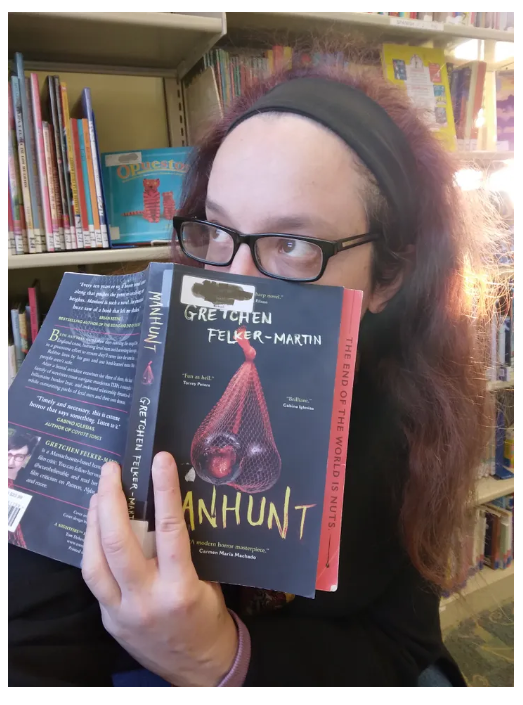







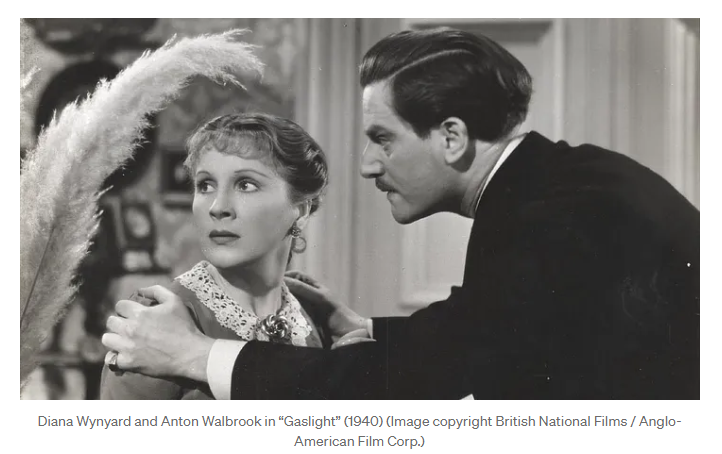




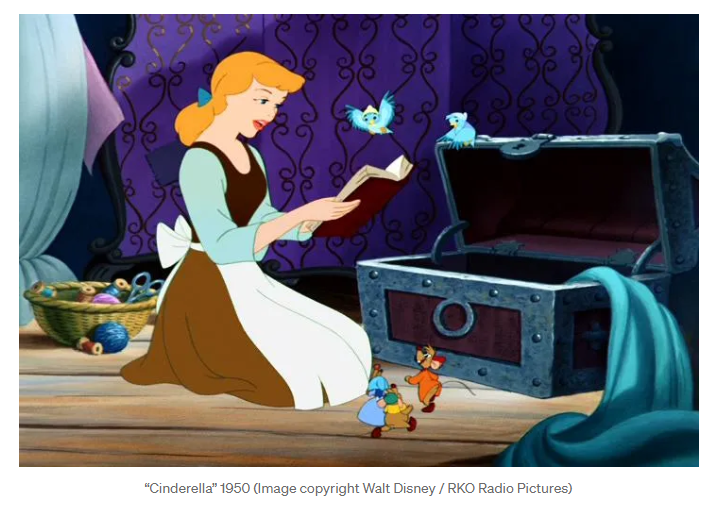

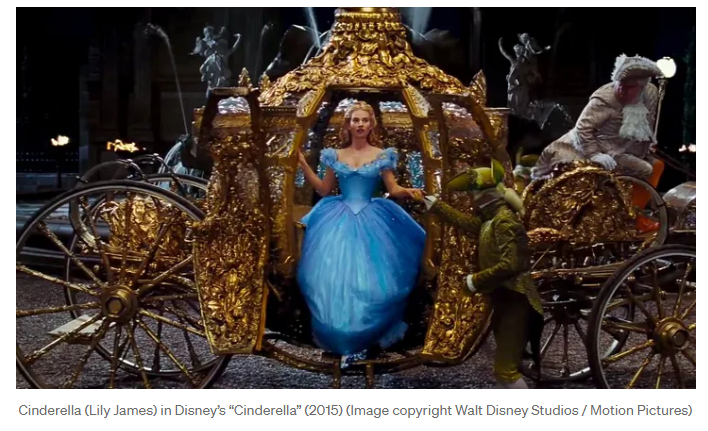
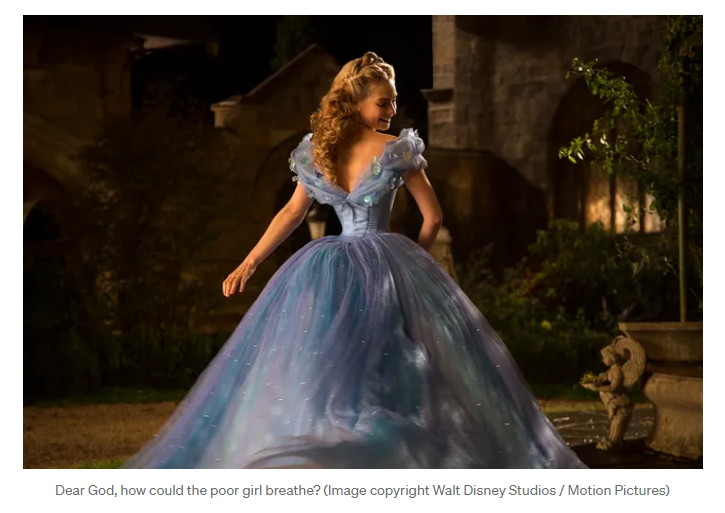

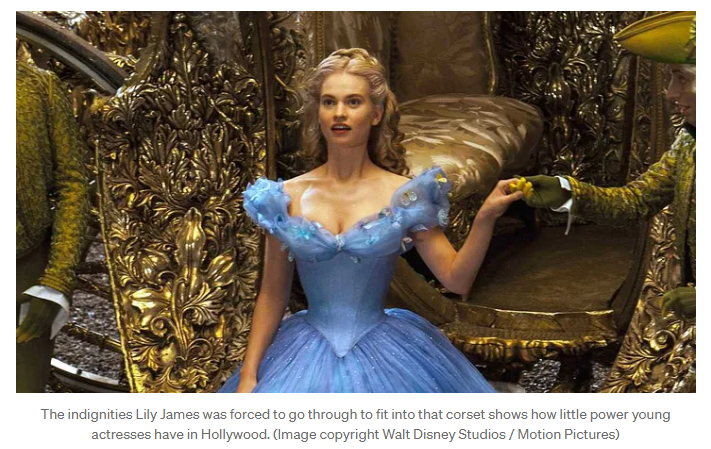


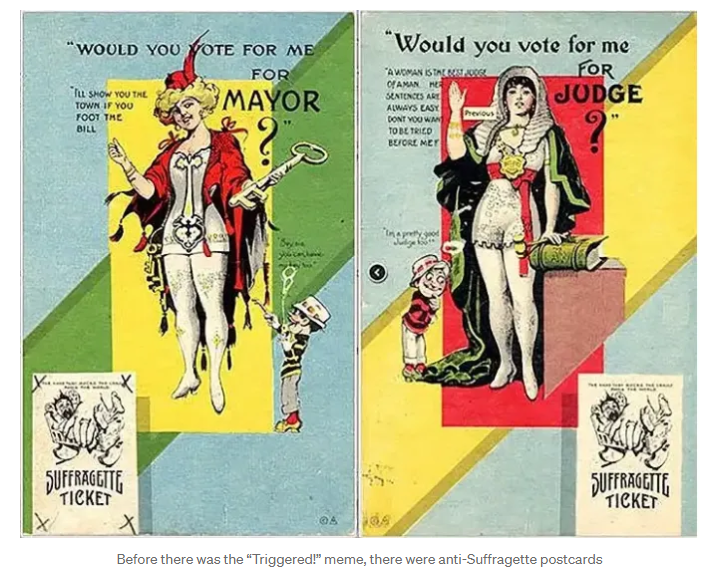




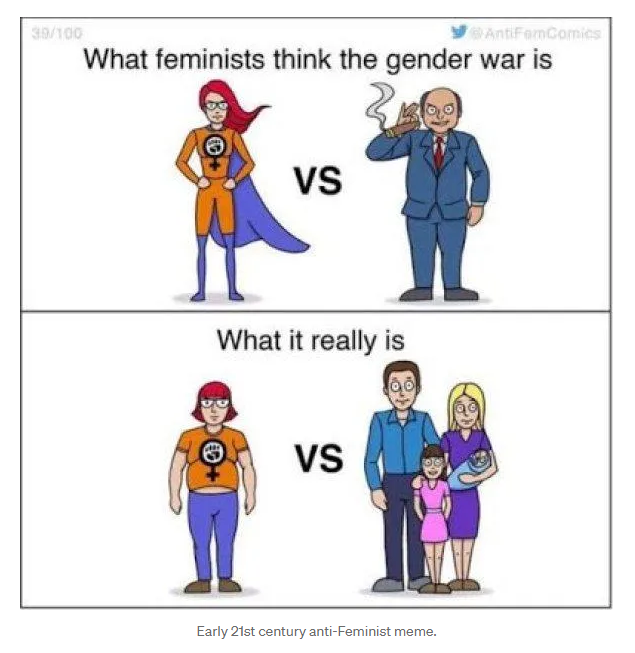






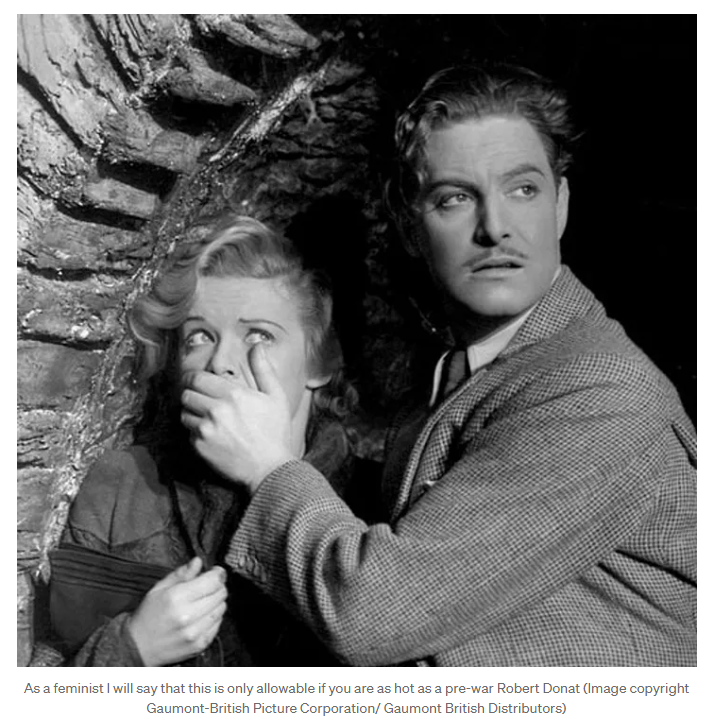


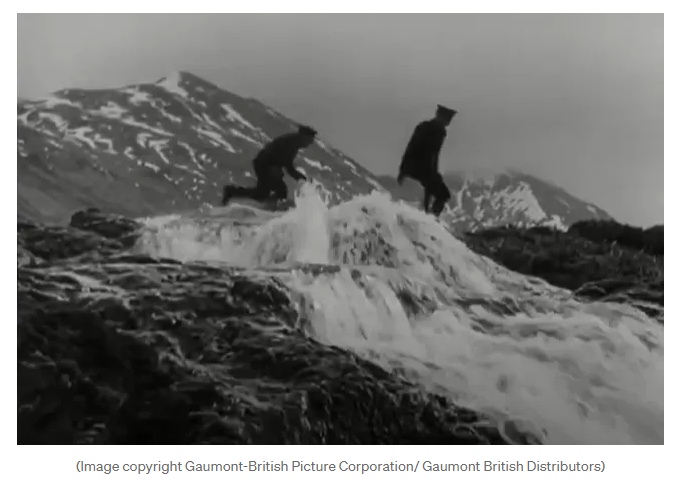


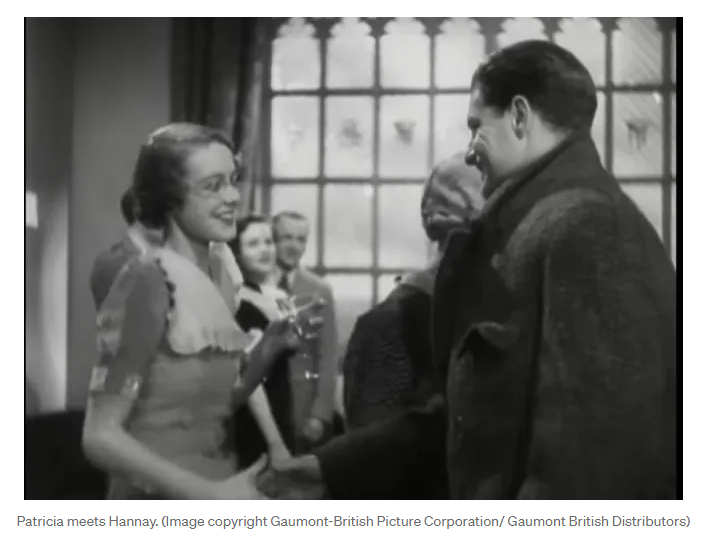







 RSS Feed
RSS Feed
